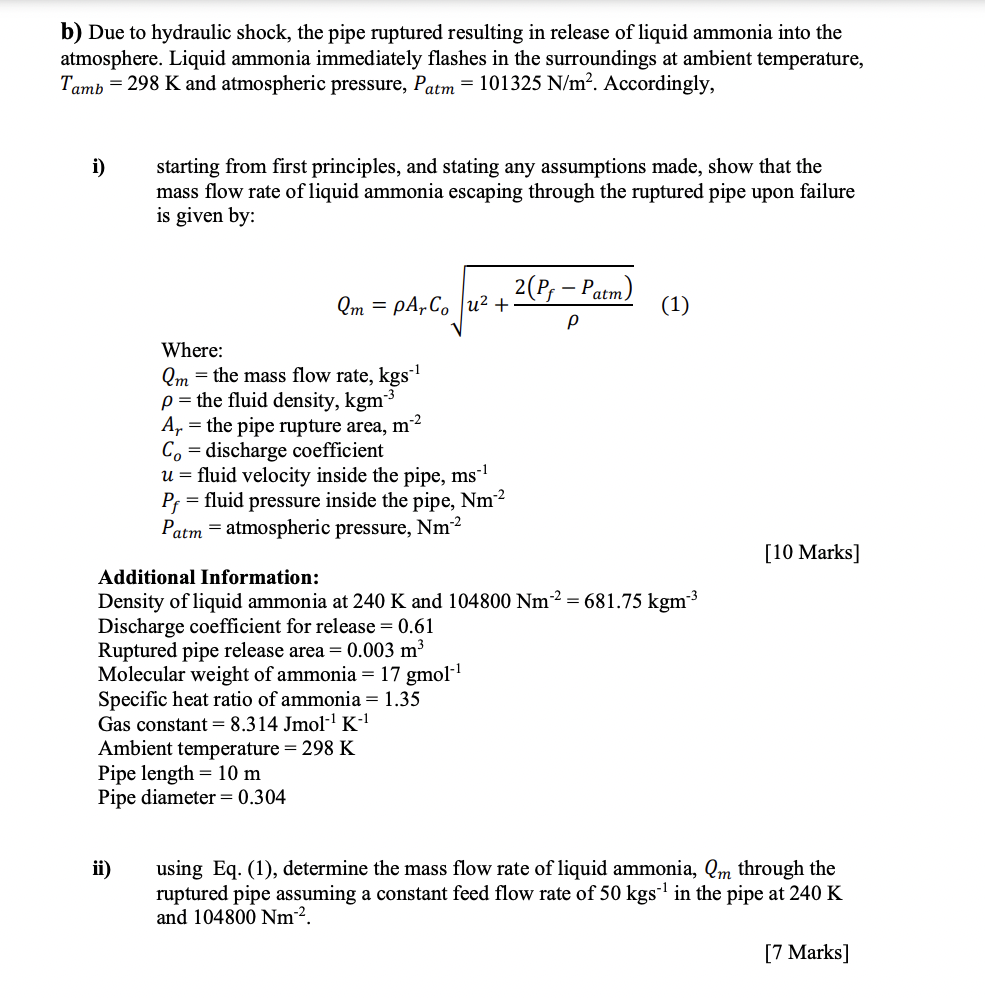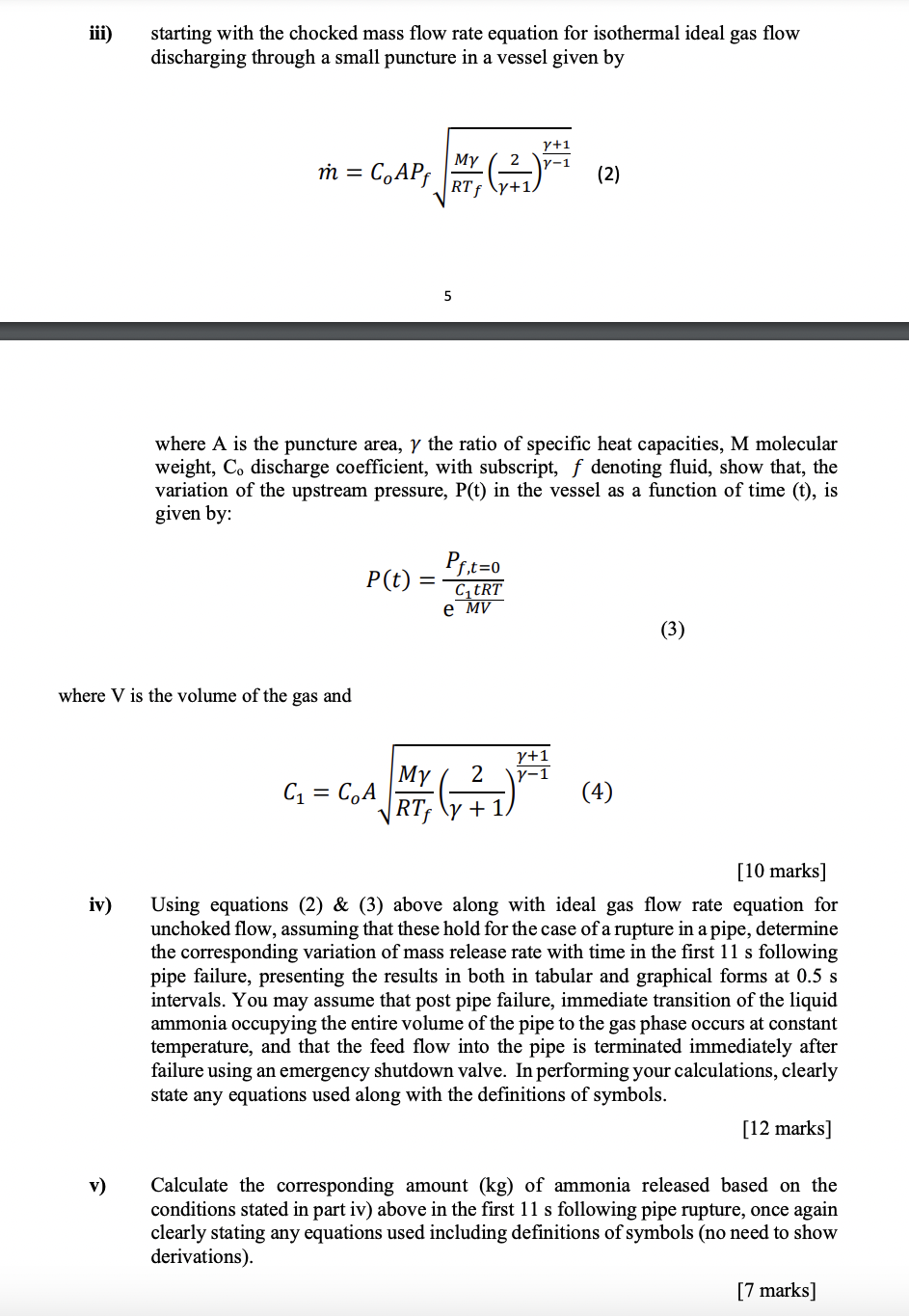

b) Due to hydraulic shock, the pipe ruptured resulting in release of liquid ammonia into the atmosphere. Liquid ammonia immediately flashes in the surroundings at ambient temperature, Tamb = 298 K and atmospheric pressure, Patm = 101325 N/m. Accordingly, i) starting from first principles, and stating any assumptions made, show that the mass flow rate of liquid ammonia escaping through the ruptured pipe upon failure is given by: 2(Ps Patm) Qm = pAr C. u2 + (1) Where: Im = the mass flow rate, kgs-1 p= the fluid density, kgm3 Ar = the pipe rupture area, m? Co = discharge coefficient u= fluid velocity inside the pipe, ms-1 Pf fluid pressure inside the pipe, Nm2 Patm = atmospheric pressure, Nm 2 [10 Marks] Additional Information: Density of liquid ammonia at 240 K and 104800 Nm2 = 681.75 kgm 3 Discharge coefficient for release = 0.61 Ruptured pipe release area = 0.003 m3 Molecular weight of ammonia = 17 gmoll Specific heat ratio of ammonia = 1.35 Gas constant = 8.314 Jmol-1 K-1 Ambient temperature = 298 K Pipe length = 10 m Pipe diameter = 0.304 ii) using Eq. (1), determine the mass flow rate of liquid ammonia, Im through the ruptured pipe assuming a constant feed flow rate of 50 kgs in the pipe at 240 K and 104800 Nm. [7 Marks] iii) starting with the chocked mass flow rate equation for isothermal ideal gas flow discharging through a small puncture in a vessel given by Y+1 27-1 m = = C,AP My RT (2) 5 where A is the area, y the ratio of specific heat capacities, M molecular weight, C, discharge coefficient, with subscript, f denoting fluid, show that, the variation of the upstream pressure, P(t) in the vessel as a function of time (t), is given by: Pf,t=0 P(t) = GERT e MV (3) where V is the volume of the gas and 7+1 y-1 C1 = C,A My 2 RT, (y + 1 (4) iv) [10 marks] Using equations (2) & (3) above along with ideal gas flow rate equation for unchoked flow, assuming that these hold for the case of a rupture in a pipe, determine the corresponding variation of mass release rate with time in the first 11 s following pipe failure, presenting the results in both in tabular and graphical forms at 0.5 s intervals. You may assume that post pipe failure, immediate transition of the liquid ammonia occupying the entire volume of the pipe to the gas phase occurs at constant temperature, and that the feed flow into the pipe is terminated immediately after failure using an emergency shutdown valve. In performing your calculations, clearly state any equations used along with the definitions of symbols. [12 marks] v) Calculate the corresponding amount (kg) of ammonia released based on the conditions stated in part iv) above in the first 11 s following pipe rupture, once again clearly stating any equations used including definitions of symbols (no need to show derivations) [7 marks]








